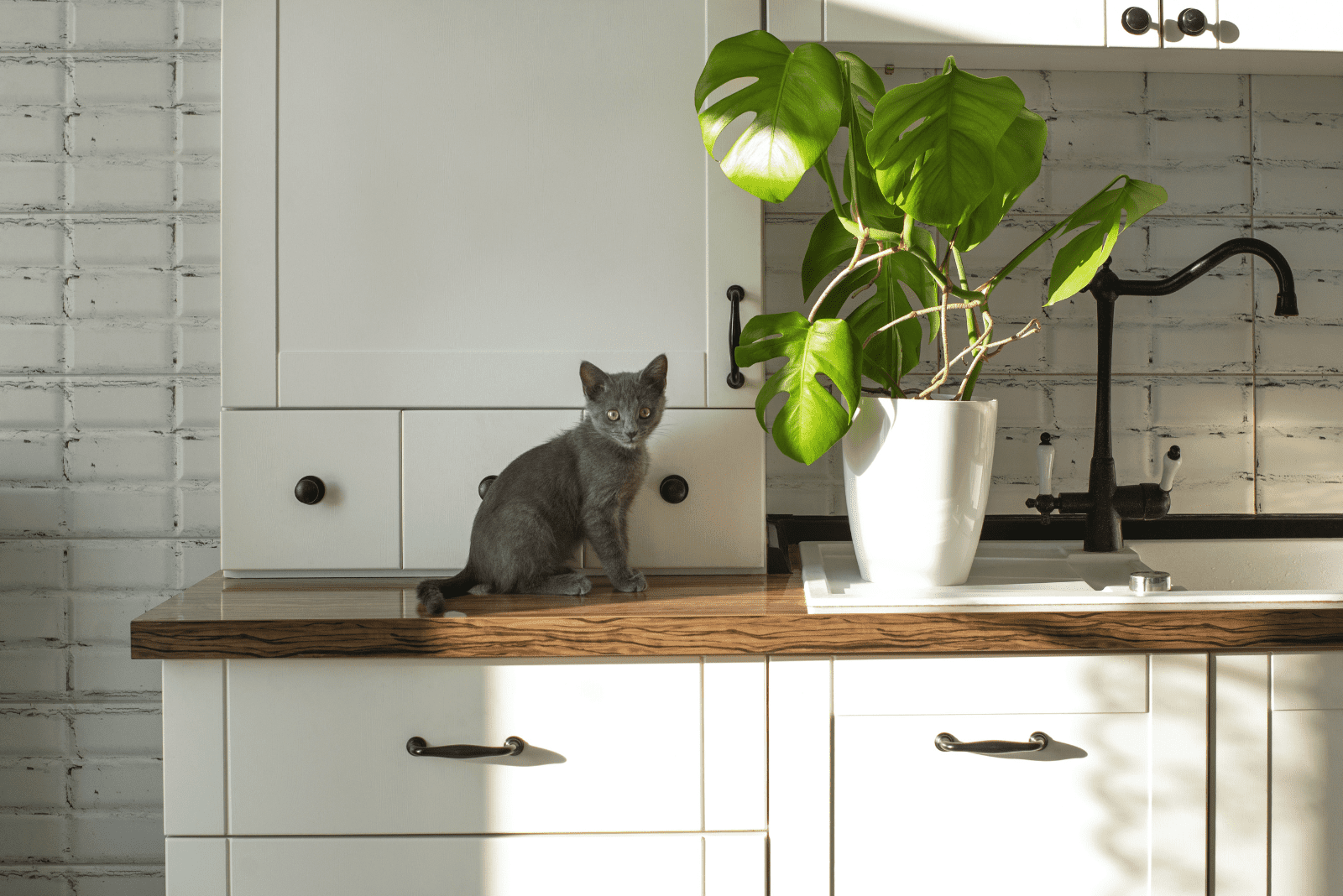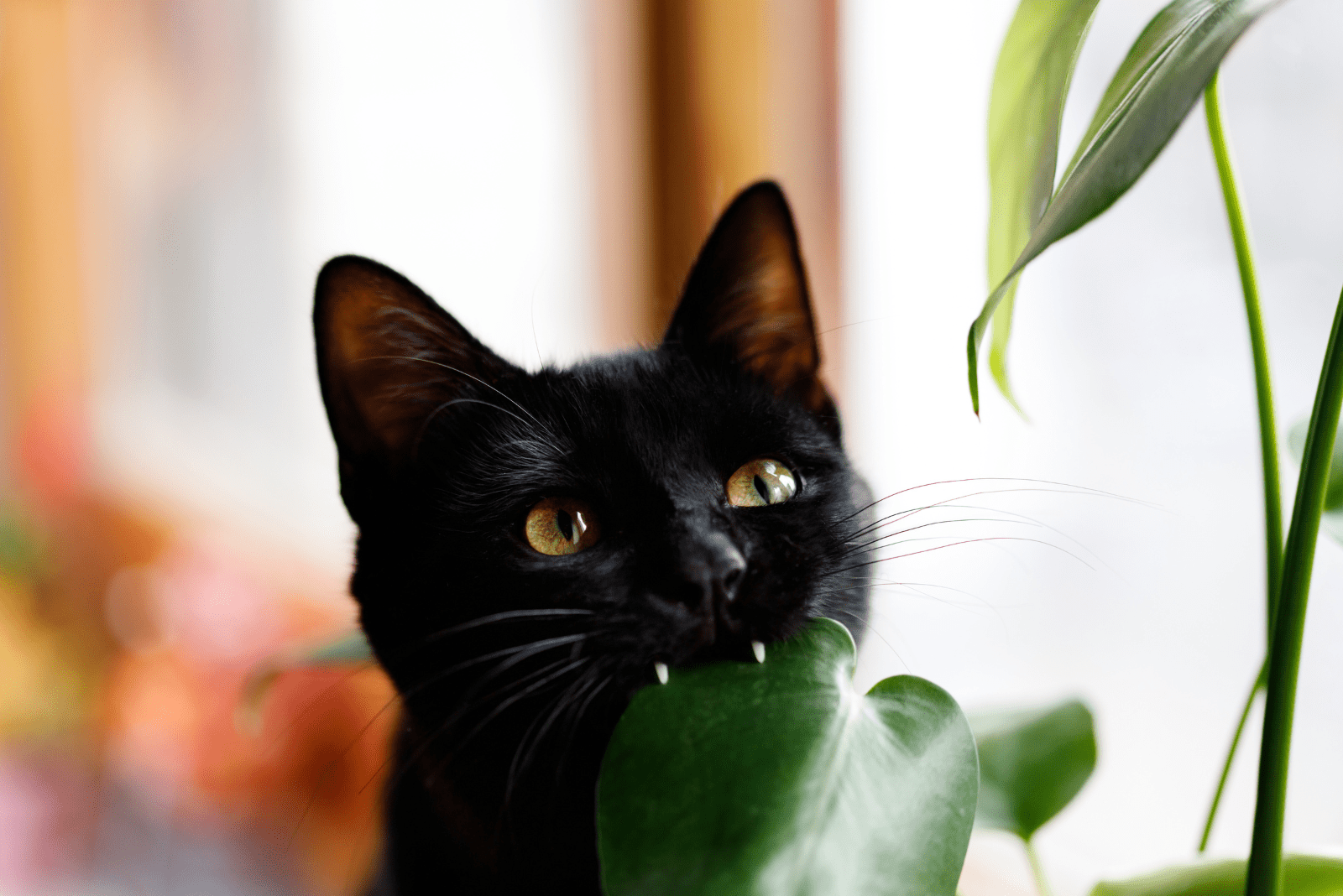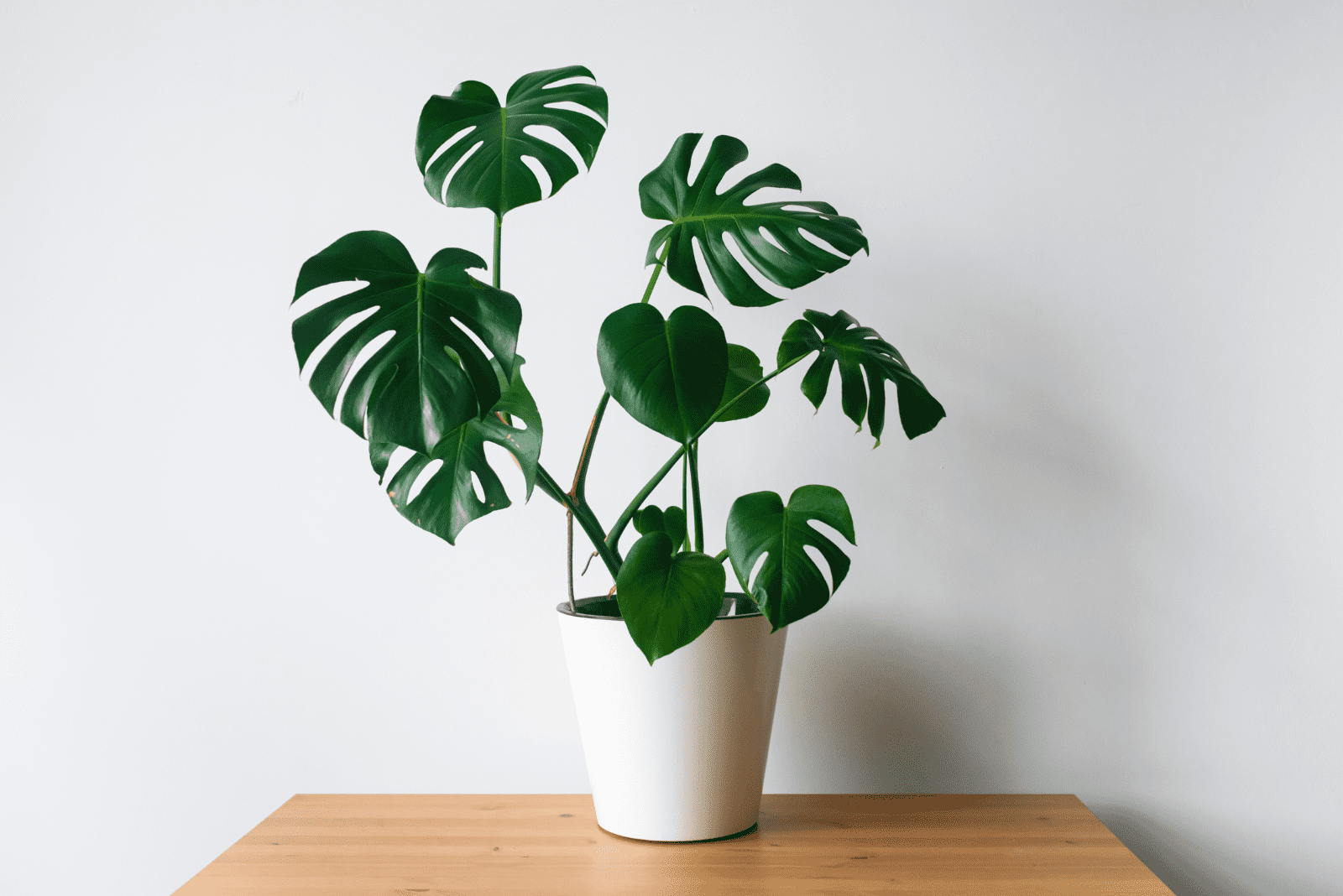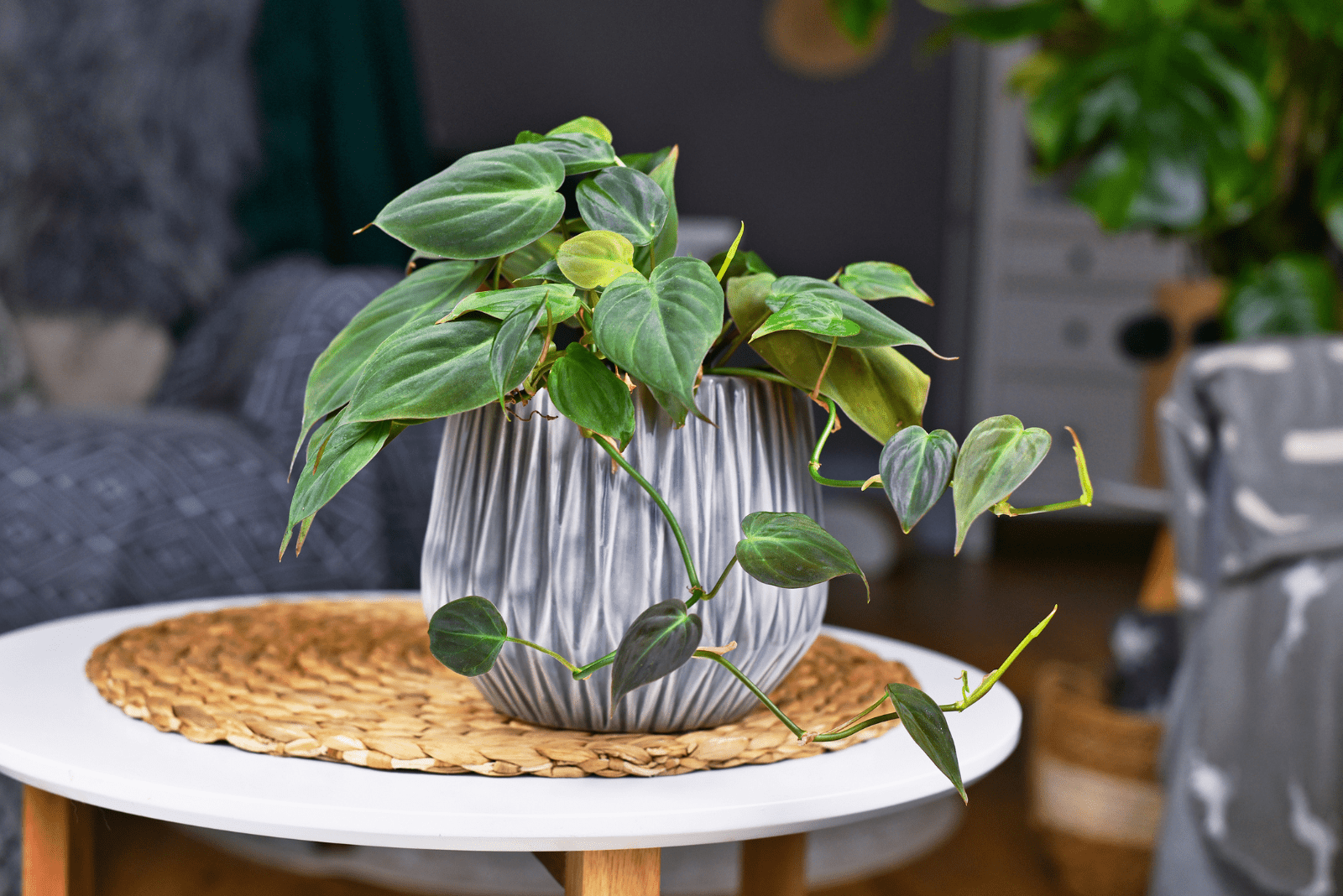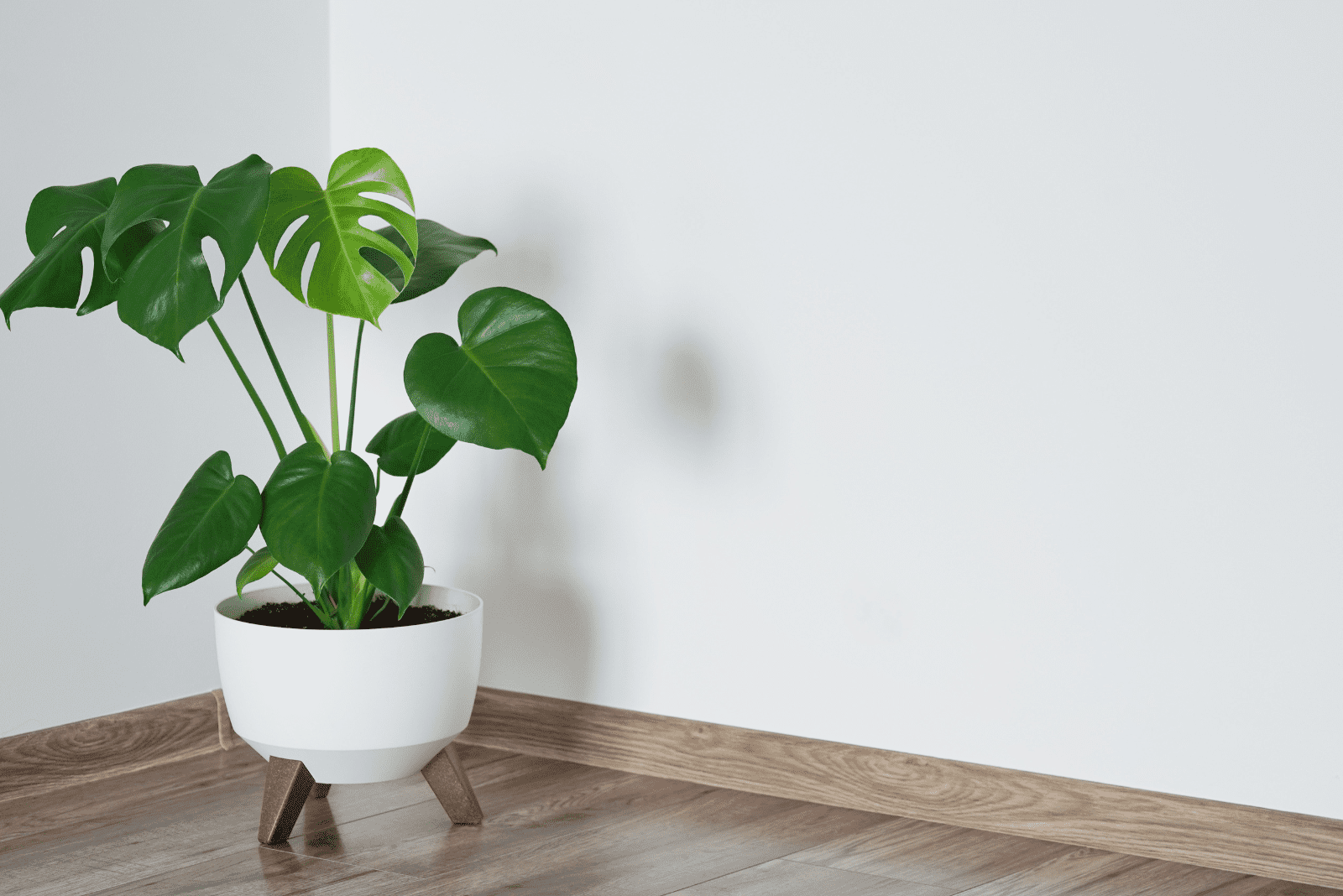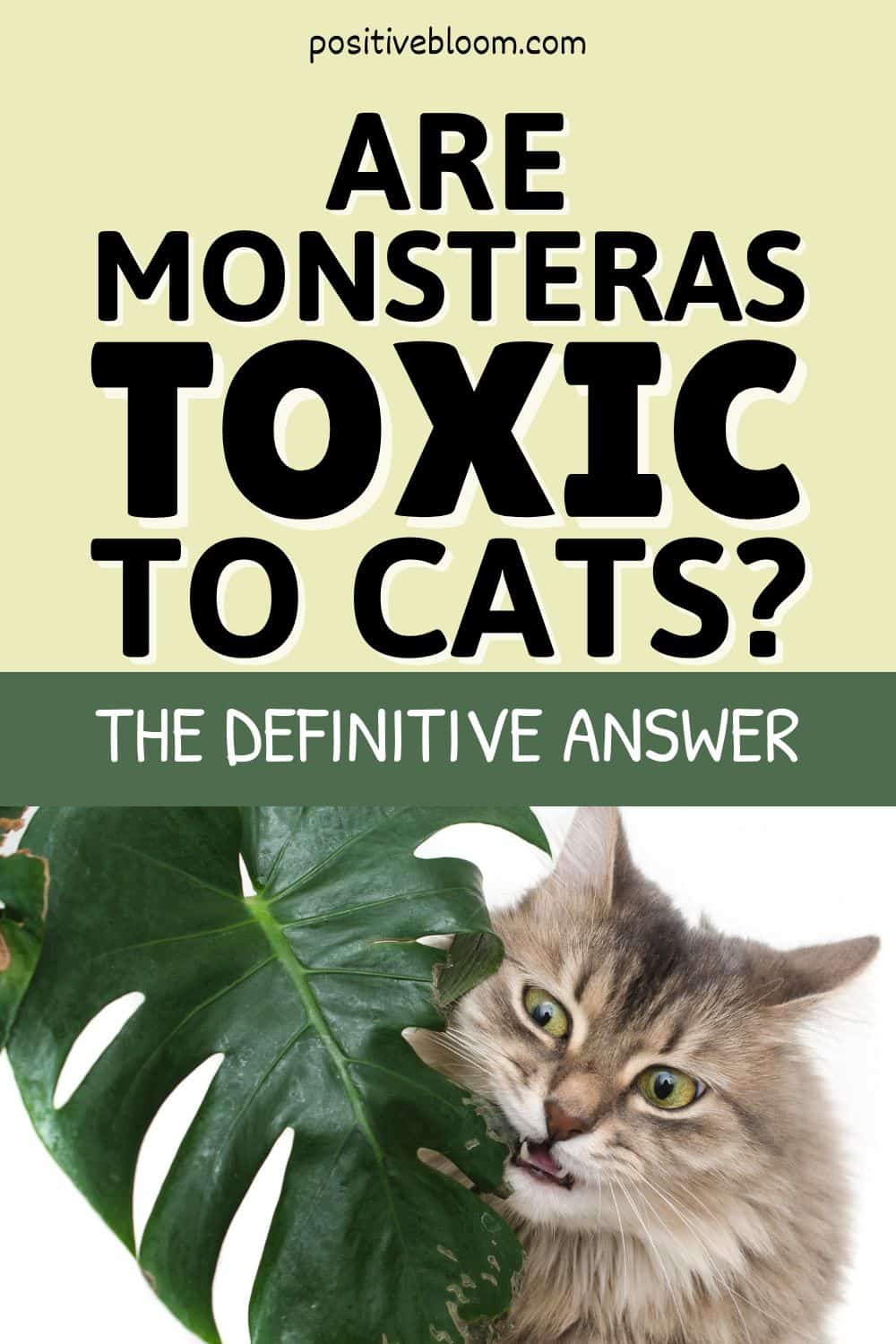“Are monsteras toxic to cats?” is a common question I get regarding this plant. Pet owners definitely need to do their research as there are many plants that aren’t safe for pets!
This article will provide a definitive answer to this popular question, and we’ll also examine some other issues like what happens to your cats when they eat monstera leaves and how to treat them if they do.
There are many gardeners and pet owners that like plants that aren’t really cat-safe, but don’t worry! We’ll also go through some things you can do to keep your feline friends away from poisonous plants.
To finish up, we’ll also look at a list of toxic and non-toxic plants, so you know which ones you need to keep your pets away from.
Before we get into all that, let’s look at the basic characteristics of monstera plants:
[table id=300 /]
Are Monsteras Toxic To Cats?
Unfortunately, monstera plants are dangerous to cats, so you should do everything in your power to prevent your cat from nibbling on their leaves.
They cannot be deemed toxic in the traditional sense of the word because your cat won’t immediately die if it eats a few monstera leaves. However, it isn’t a safe plant either, and it can cause a lot of pain problems to your pet.
We will look at some common symptoms of monstera poisoning, and what you can do to bring your pet back to health.
Before we tackle these questions, let’s look at what makes monsteras so poisonous.
Monstera Toxin
It’s quite easy to take care of Monstera deliciosa. Still, all parts of the plant contain insoluble calcium oxalate crystals, so you should think twice before getting one if you’re a pet owner.
Calcium oxalate crystals cannot dissolve, and they cause irritations around the mouth and in the stomach if ingested.
When you look at them under a microscope, you can see that they are found in clusters of needle-like crystals called raphides.
The plant ejects these crystals when it comes into contact with water or saliva.
The good news is that consuming these crystals is not fatal, and your cat should be fine apart from some pain and discomfort.
Calcium oxalates can even cause kidney stones, but it is not entirely certain why plants produce this substance.
Some believe it’s a defense mechanism against herbivores, while others have deemed it to be a by-product of protein metabolism. Finally, a small group of physiologists thinks that calcium oxalate crystals can be dissolved and even used in further plant growth and development.
Symptoms Of Monstera Poisoning
Even though Monstera adansonii plant care is pretty straightforward, that doesn’t make it safe for your pets.
Monsteras won’t kill your cats unless consumed in enormous quantities, but there will certainly be some symptoms if your fluffy feline friend eats any of this plant.
Calcium oxalate can cause severe skin irritations and a burning sensation around the mouth, lips, and tongue.
Excessive drooling is another side-effect of consuming a Swiss cheese plant and is usually accompanied by swelling, difficulty swallowing, and a loss of appetite.
In some extreme cases, your cat might have difficulties breathing, so you should take them to a vet ASAP.
How To Treat Monstera Poisoning
Sadly, there isn’t an antidote to alleviate the effects of monstera ingestions, but you shouldn’t worry too much.
Monstera poisoning isn’t that dangerous and your cat will live. However, if you notice any plant leaves missing or bitten, you should inspect your cat’s mouth for signs of oral irritation. If there is no swelling or redness, you might not have to do anything.
But if your furry friend appears to be in pain, you should offer it some water to stimulate drinking and wash out the remainder of the crystals. You can even give your pet some moist food to eat to help it as well.
If your cat seems reluctant to drink or eat, you can always rinse its mouth out with some water yourself.
If the swelling doesn’t seem to go away you should head to the vet, where they will manage your pet’s airway and give it some painkillers, or even fluids and electrolytes if the cat is dehydrated.
If you’re not sure whether you should wait or visit the vet, you can reach out to Animal Poison Control or can your vet just to be on the safe side.
How To Keep Cats Away From Monsteras
Many pets find the green leaves of monstera plants irresistible, which is why you should look for some ways to keep your cat safe from this indoor plant.
We have brought you some ingenious ways of preventing your furry friend from eating your plants, including keeping the monstera out of reach, distracting or training your cat, and using repellents.
Place The Monstera Out Of Reach
Monsteras are popular houseplants, and all gardeners want to own at least one variety, but if you have a pet you know that you cannot just place it anywhere you like.
Putting it out of your cat’s reach might be a bit difficult as these little nuisances can climb everywhere.
However, placing a monstera in a hanging basket can give your home a unique decoration while keeping your cat safe at the same time.
You can also put this plant somewhere up high, but make sure that there’s no way your resourceful cat could climb it.
Another thing you can do is make a safe space specially for your plants (and you). It could be a lady cave where you go to relax and let your mind at ease.
You can also do the opposite and create a special area just for your pet. Build a barrier or a fence that your cat cannot cross, but also make it suitable for your pet so that it doesn’t want to leave in the first place.
Mulching the soil
Monsteras are toxic to dogs just like they are to cats, but there is something that can keep your pets away from this gorgeous plant.
For instance, your cats won’t dig up your monstera if you place something on the surface that they don’t like to tread on, like mulch. Mulching your monstera plants with pine needles, bark, or small stones can help deter your cats from your plants.
Cats definitely don’t like the feeling of these materials under their fluffy paws, so they will most likely steer away from plants mulched with them.
Covering the topsoil with something will make it harder to dig your plant out, and who knows, perhaps those two minutes will be enough time for you to save both your plant and your feline friend.
Using Repellents
There are many repellents (homemade and store-bought ones) that can keep your cats away from plants.
For instance, cats detest the smells of rosemary, citrus fruit, vinegar, and coffee, so it might be a good idea to surround your plant with some of these fragrances.
You can place some orange, grapefruit, lime, or lemon peel around your plant, or even dab a drop or two of citrus essential oil on the pot.
Water and a few drops of lemon juice are also an excellent spray deterrent, just don’t put too much lemon juice as it may end up hurting your plant.
Two spoons of mustard and red pepper mixed with water make another spray that’ll keep your cat at bay.
If this is all too much work, you can simply place potted rosemary near your monstera to repel the cat.
If your kitty is surprisingly resistant to all these scents, you can always get some pet deterrent sprays from Amazon and spray them around your plant (but not onto the plant as it might harm it) to keep the cat at bay.
Distract The Cat
Playing with your cat or giving it some toys can be a great way to distract it and make it forget about your plant.
For instance, you can give it some catnip, silverine, or cat thyme to nibble on. You can also place a scratching post in the space designated for your pet so that it’s occupied and stays away from your plants and furniture.
Cats require lots of attention, and if you neglect your feline friend it might start wreaking havoc just to get you to notice it.
A ball of yarn or some plastic balls are a great way to entertain your pet, but if nothing seems to be working you can always turn on kitty TV on YouTube.
Training The Cat
Training your cat to stay away from your plants is one of the best ways for these two beings to co-exist, although your pet might not like it.
You can spray your feline friend with water every time it gets near your plant or anything else like your monstera, furniture, etc.
Your cat certainly won’t like being sprayed with water, so it will eventually learn to stay away from your plants.
Other Toxic Plants
Unfortunately for your cats, monsteras aren’t the only plants toxic to felines. There are many more varieties that contain calcium oxalates or other elements that make them undesirable to your pets.
We’ll examine some of the most common toxic houseplants so that you can avoid them or be careful when around them.
Philodendron
According to the ASPCA, philodendrons are toxic to cats, and that includes heartleaf, cut-leaf, split-leaf philodendron, and all the other varieties.
Generally speaking, all plants from the family Araceae (that is, all aroids) contain calcium oxalates, which makes them more or less toxic to cats.
They can cause irritations, drooling, vomiting, swelling, difficulty breathing, and all sorts of other issues to your cat.
Snake Plants
Snake plants contain saponins and are toxic to cats. This element serves as a defense mechanism for the plants against microbes, fungi, and certain insects, so it’s not particularly strong.
However, your plant can still suffer from gastrointestinal issues such as diarrhea, nausea, vomiting, abdominal pain, loss of appetite, and drooling.
Thankfully, the toxin is not strong enough to kill your cat unless eaten in exceedingly large quantities, but you should still take it to the vet if it does so.
Jade Plant
Jade plants are another variety that contains saponins, which makes them toxic to cats. Just like snake plants, they can cause nausea, drooling, vomiting, diarrhea, stomach ache, and a loss of appetite.
This variety can also make your cats dizzy and lose coordination, lead to breathing problems, and can cause skin irritations.
Pothos
Just like monsteras, pothos plants contain calcium oxalate crystals that can irritate the skin and mucous membranes of both you and your pet.
These crystals may lead to excessive drooling, vomiting, stomach pain, and loss of appetite, so make sure to keep this plant away from your cats.
Always wear gloves when pruning, propagating, and repotting this plant because its sap can cause skin irritations.
Dieffenbachia
Another plant that produces calcium oxalates is the dieffenbachia. Thankfully, it isn’t deadly, but it can still cause your cat pain so you should keep it in a safe place.
Ingesting calcium oxalates is incredibly painful and can cause vomiting, loss of appetite, swelling, etc., so you should train your pet to stay away from this plant.
Peace Lily
The peace lily also contains calcium oxalate crystals, and even though the plant cannot be considered truly poisonous, your pet will still have to deal with the loss of appetite, skin irritation, vomiting, drooling, etc.
After spending some time tending to a pet that has eaten some peace lily, you’ll be a firm advocate for getting this plant onto the list of toxic plants.
Pet-Friendly Plants
Not everything is bad!
There are plants that aren’t toxic to your cats, and you can choose them over the poisonous ones and put your mind at ease. Your paw friend will be safe and sound, and your house will look fantastic with some of these pet-friendly plants!
For instance, the ASPCA considers spider plants to be non-toxic to both cats and dogs, but you shouldn’t encourage your pet to eat them as it can still lead to an upset stomach and other issues.
Similar plants include peperomias, cat grass, catnip, calatheas, and all pilea varieties.
Frequently Asked Questions
In the paragraphs below, you will find the answers to some questions that elucidate the topic of poisonous plants even more and give you some insight into why cats are actually attracted to houseplants.
Let’s take a look!
Are monsteras toxic to humans?
Monsteras are mildly toxic to humans, and their sap can cause skin irritations and burning sensations if it comes into contact with your skin.
Vomiting, swelling of the tongue, and breathing problems can also occur, so contact your doctor if your child has accidentally eaten some monstera leaves.
What is the most toxic plant for cats?
True lilies are considered to be the most toxic plant to cats on almost every list.
Even a tiny amount can be fatal to kitties, so make sure you contact your vet at once if you suspect lily poisoning.
These plants contain nephrotoxins, which lead to fatal kidney failure if not treated at once.
The first signs include vomiting, loss of appetite, excessive drooling, and lethargy. Your cat will urinate more and suffer from dehydration within 12-24 hours, suggesting kidney damage which may end fatally if not treated.
Why do cats eat houseplants?
There are a couple of theories about why cats eat houseplants, and the first one is that it helps them feel better if they are suffering from certain food allergies or bowel diseases.
Some researchers also suggest that cats eat grass because they can replenish the nutrients and minerals they don’t get in their (primarily carnivorous) diet.
Another reason for your cat nibbling on houseplants is that it believes it is hungry all the time and simply cannot restrain itself.
There’s also a belief that eating grass helps cats reduce internal parasites, while others believe it is their normal behavior and that they have preferences for certain foods just like we do.
If your cat is constantly chewing grass and other plants, it might be a sign that it is under some stress, so take it to the vet to determine what’s causing the grass stress-eating.
Final Word
The main concern of this article was answering the question: “Are monsteras toxic to cats?” And the answer is yes.
These plants contain calcium oxalate crystals, which cause irritations, swelling, breathing problems, and other issues, but they are not fatal, so you don’t have to worry too much if your cat has only taken a bite or two.
In any case, this article included common issues and treatments for monstera poisoning, as well as some ways of keeping your pets away from these plants.
Finally, we made a short list of toxic and non-toxic plants for cats so you can choose which one to get.
Good luck, and until next time!
Like this post? Share or pin it for later!

